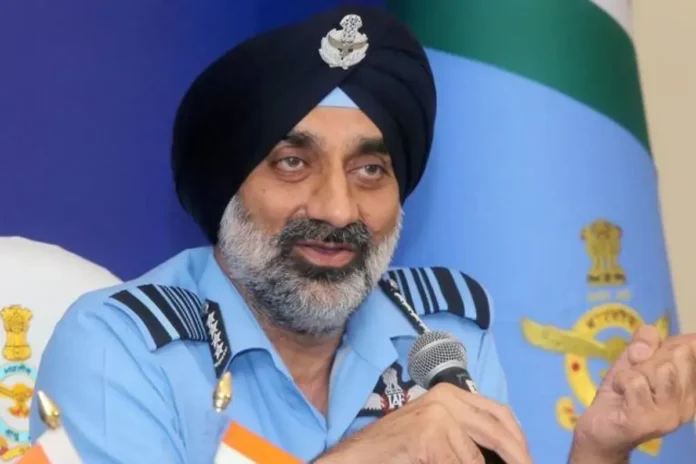Defense systems will be crucial for India in the coming years, as the Indian Air Force stated on Friday, emphasizing the need for more air defense capabilities. With air strikes emerging as a significant threat in ongoing wars, the full deliveries of the Russian S-400 system are still pending, making it a priority for strengthening national security.
Impact of Ongoing Wars on Supply Chains
Assuming you comprehend the complexity of global supply chains, the ongoing wars in Ukraine and the Middle East are causing significant disruptions. Indian Air Force Chief, Air Chief Marshal AP Singh, highlighted how these conflicts have contributed to a breakdown in the supply of crucial components for aircraft maintenance. While the IAF is currently managing to sustain operations, the situation prompts a critical reassessment of your defense strategy to enhance self-reliance in production and minimize dependencies on external suppliers.
Importance of Airpower in Contemporary Conflicts
For you to grasp the shifting dynamics of modern warfare, recognizing the role of airpower is crucial. As articulated by Air Chief Marshal AP Singh, the significance of air capabilities has become increasingly apparent in ongoing conflicts like those between Russia and Ukraine, as well as Israel and Hamas. These conflicts underscore the necessity for nations, including India, to bolster their aerial defense systems in response to heightened security threats.
Concerns about regional stability reinforce the importance of airpower in contemporary conflicts, where air strikes have emerged as a tangible threat. The ongoing wars showcase how air dominance can influence ground operations and deter adversaries. With new technologies and an evolving strategic landscape, you should note the Indian Air Force’s commitment to enhancing its capabilities through indigenous programs such as Tejas and advanced surface-to-air missiles. This evolution positions airpower as an indispensable asset in safeguarding national interests.
Focus on Self-Reliance and Indigenous Projects
Even in the face of supply chain challenges arising from ongoing conflicts, the Indian Air Force is committed to enhancing self-reliance by prioritizing indigenous projects. Air Chief Marshal AP Singh emphasized the importance of developing homegrown capabilities such as Tejas, Tejas Mk2, and AMCA, aiming for an entirely domestically produced inventory by 2047. This strategic shift not only addresses supply disruptions but also strengthens national defense and technological independence.
Responses to Regional Tensions and Infrastructure Development
Little doubt exists regarding the challenges posed by regional tensions, particularly with China. The Air Force is proactive in responding by building advanced infrastructure in sensitive areas, ensuring high operational readiness against potential threats.
Development of Advanced Landing Grounds (ALGs) and new airbases in eastern Ladakh illustrates the Indian Air Force’s response to the tense situation at the Line of Actual Control (LAC). As the Chinese enhance their infrastructure, you’ll find that India is not standing still; rather, it is enhancing its own capabilities to maintain a robust defense posture in the region. The Air Force’s focus on staying prepared involves investing in more training and preserving existing assets, alongside addressing the delayed production of new fighter aircraft like Tejas to ensure readiness when needed.
Current Operational Preparedness
There’s a strong emphasis on operational readiness within the Indian Air Force, which is prepared to respond to potential threats along its borders. As Air Chief Marshal AP Singh stated, India is currently well-equipped with three units of the S-400 air defense system, with two additional units expected by 2025. This strategic readiness ensures that you, as citizens, can trust that the Air Force is actively addressing any air strikes and potential threats amidst ongoing global conflicts.
Training and Preservation of Existing Assets
There’s a focus on optimizing training and maintaining current aircraft to bolster defense capabilities. Given the challenges in aircraft production, particularly with the Tejas program experiencing delays, the Indian Air Force is prioritizing the preservation of existing assets. This strategy ensures that your defense forces remain effective and capable, even as new platforms are developed.
A significant part of this approach involves rigorous training programs aimed at enhancing pilot proficiency and ensuring that existing airframes are maintained in peak condition. The Air Force acknowledges the need to make the best use of available resources while awaiting responses for new aircraft, positioning itself to adapt to any operational demands you may face. The commitment to a well-trained and equipped force reflects an understanding that readiness today lays the groundwork for future security.
Medium Role Fighter Aircraft Requirements
An emphasis on the need for Medium Role Fighter Aircraft (MRFA) has been highlighted by the Indian Air Force. You should be aware that the Air Chief Marshal has clarified the requirements for these aircraft, urging domestic production as a priority. The delays in existing programs, particularly with the Tejas, underline the importance of moving forward in this domain to ensure that your Air Force remains equipped and capable for future challenges.
S-400 Defense System and Delivery Timeline
Aircraft deliveries of the S-400 defense system are critical to India’s air defense capabilities. The Air Force has received three of the five planned units, with the remaining units delayed primarily due to the ongoing Ukraine conflict. You can expect the final deliveries to be completed by 2025, enhancing your defense infrastructure considerably.
Defense officials are working against a backdrop of global supply chain disruptions impacting the timely acquisition of crucial weapons systems. With only three units of the S-400 delivered and two more expected by 2025, your Air Force is well aware of the challenges presented by current geopolitical tensions. These developments will ensure that India maintains a robust air defense posture even amid fluctuating supply conditions.


